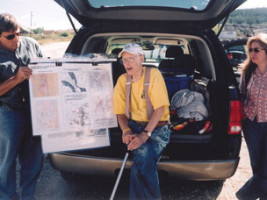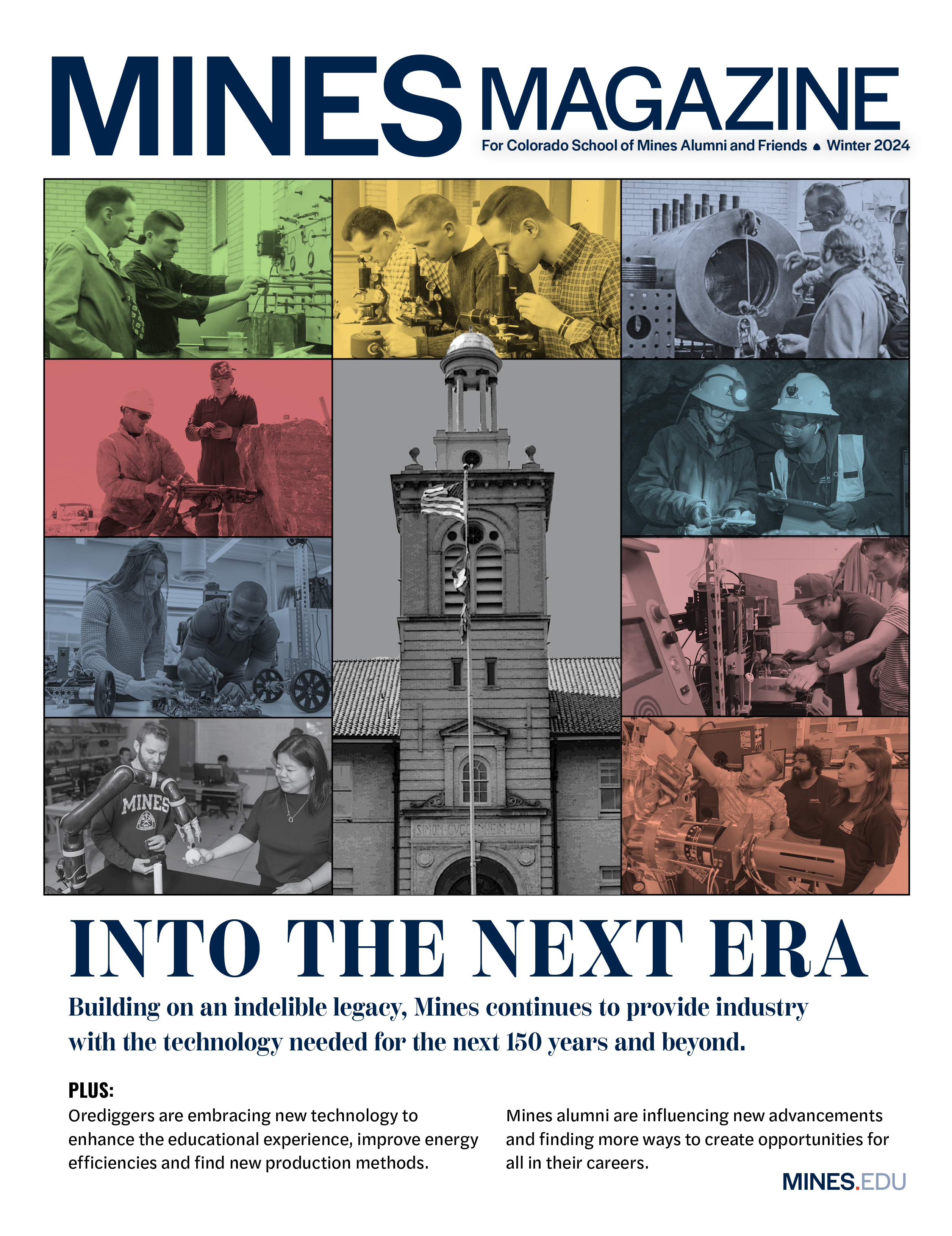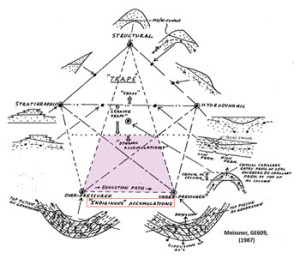
Drawing from one of Fred Meissner’s course books
“The petroleum system approach is the guiding principle for everything we do these days,” says John Curtis, professor emeritus of geology and geological engineering and director of Mines’ Potential Gas Agency, which provides technical and administrative support to the influential Potential Gas Committee that is responsible for issuing estimates of future domestic natural gas supplies.
Demaison and Meissner are two of the five people who formalized and championed the petroleum system approach, which factors in all components and processes required to create and preserve hydrocarbons. Curtis explains that depending on the region, these might include source rocks, reservoir rocks, seal rocks, overburden rocks, trap formation, and the timing of hydrocarbon generation, migration and accumulation.
In recent years, the PGC has nearly doubled its estimates for technically recoverable natural gas, largely due to the shale gas drilling underway in U.S. plays from the Appalachians to the Rockies and beyond. Development of the petroleum system approach three decades ago helped the energy industry understand where these hydrocarbons could be found, but only recently have technological developments been made to unlock them.
The impact on oil recovery is much the same. The United States is importing 1 million to 1.5 million fewer barrels of oil per day thanks to these developments, and companies prospecting overseas have roughly a 1 in 3 chance of finding something, compared with 1 in 20 in the mid-20th century.
“We went from looking for and drilling geological structures in hopes they would hold hydrocarbons to backing up and looking at everything from the source rocks that generated the hydrocarbons to the rocks in between the source rock and the trap, and understanding it all in four dimensions, time being the fourth,” Curtis says. “Their work has made all the difference in the world.”
![]()
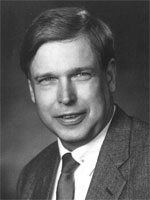
In his 1978 paper, ‘Petroleum Geology of the Bakken Formation,’ Fred Meissner pointed to ‘hydrocarbon kitchens’ as potential sources of oil and gas.
Demaison was born in France in 1927, the son of novelist André Demaison, who traveled widely and often returned from exotic locales with semiprecious stones and fossils. His father’s collections sparked the younger Demaison’s interests at an early age, inspiring him to pursue degrees in geology and paleontology at the University of Paris before heading to Mines in 1949 for a master’s degree in geology and geological engineering. He had to interrupt his studies for a year of national service in the French military, and when he returned to Golden, he was dismayed to learn that Dean William Burger was requiring that he bolster his knowledge of chemistry before graduating. This added another year to his education.
“He said geology alone is not enough,” recalls Demaison, now 86, retired and living in California. “I grumbled at the time, but it opened my mind.” That additional training set him apart as one of the first to infuse organic chemistry into geology and prepared him to understand new technologies, like gas chromatography and mass spectrometry, that were poised to revolutionize the industry.
“For a long time, the industry found most of the world’s oil without really knowing where it came from,” says Demaison. “The origin of oil was a complete mystery. These new technologies permitted us to observe, in crude oil and source rocks, at the molecular level, what was going on in the subsurface.”
As late as the 1970s and 1980s, much exploration hinged on finding large anticlinal structures (raised folds in the earth) and drilling them. But the more companies drilled, the more dry holes they found.
Demaison clearly remembers flying over the Atlas Mountains of Algeria in 1963, looking down on a landscape that was remarkably similar to the hydrocarbon-rich Middle East. The difference: When the giant anticlines below had been drilled, no oil or gas was found.
“How can we explain that?” Demaison asked his employer and mentor, British Petroleum Chief Geologist Norman Falcon, who was sitting in the seat next to him.
Falcon responded with another question: “Where are the oil seepages?” He pointed out that throughout the nearly identical but oil-producing folded belts of Persia, many spectacular surface seepages of oil and gas are found. “Those are just not present here.”
Demaison points to this conversation as a turning point in his career. “It was the greatest and most durable lesson in petroleum geology I received in my formative years,” he says. Instead of just looking for the right formations or ‘boxes’ ripe for oil accumulation, he began to think about how oil migrated into those natural reservoirs, which led to questions about where it came from in the first place.
In subsequent years, while working at Chevron, Demaison would serve as a critical liaison between scientists developing geochemical techniques to better understand that origin and migration, and companies wanting to apply them. He would pen 21 papers, including a seminal work in 1980, ‘Anoxic Environments and Oil Source Bed Genesis,’ credited with elucidating how organic matter is deposited and preserved to form hydrocarbon source beds. His 1993 magnum opus, ‘Genetic Classification of Petroleum Systems Using Three Factors: Charge, Migration and Entrapment,’ brought it all together, earning him the American Association of Petroleum Geologists’ prestigious Wallace Pratt Award that year. (AAPG honored him again with Honorary Membership in 1995.)
At first, he stresses, his work was not universally accepted. “We met resistance from the bottom, from people who did not understand organic chemistry, to the top, where they were worried they would buy something that would not work,” he says. It was a battle he and Meissner were in together, and the two spoke frequently. “We were the knights of a new order who rattled the cages of people trying to hold on to the old methods.”
Ultimately, his persistence paid off, guiding the discovery of numerous international oil reserves. (Executives with the Brazilian state oil company Petrobras, for whom Demaison consulted, credit his work with guiding their enormous discoveries in the Campos Basin.)
In the last public talk of his career, Demaison returned to Mines to lecture before a crowd of geologists, geophysicists and petroleum engineers who were all keenly aware of the impact his work has had on their fields. “It was like a saint walking into the room,” Curtis says.
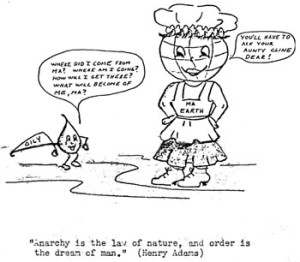
A cover drawing from the syllabus of one of Meissner’s legendary courses.
During his 18-year stint as an adjunct professor at Mines, Meissner’s course, Geology 609, also known as ‘Where oil and gas come from and how they get to where we find them,’ became the stuff of legends, Curtis says. With students running dual slide projectors, he described the hydrocarbon kitchen in detail and questioned what he called the ‘conventional dogma’ of using anticlinal theory alone to look for oil. He referred to geology as part art, part science, once telling a colleague that ‘just as in fly-fishing,’ you have to start with the right equipment and know how to use it. (That’s the science.) But to be successful, you have to think like a fish (or in this case, the oil).
“He used every trick of the trade possible. He set the stage for a generation of geologists to be much more prepared than a lot of others at integrating various disciplines,” says Mark Sonnenfeld MS ’91, PhD ’96, vice president of geoscience for Whiting Petroleum. Like many other students, Sonnenfeld still has the thick binder of class notes he received in Meissner’s class. (On its cover is a cartoon showing a drop of oil named ‘Oily’ and his mother, ‘Ma Earth.’)
When awarded AAPG’s Grover E. Murray Memorial Distinguished Educator Award in 2005, Meissner said it was the most meaningful award he had ever received. “My career as an educator has been more like a hobby than any kind of job,” he wrote.
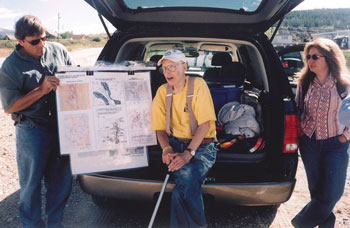
Two weeks before succumbing to esophageal cancer in 2007, Meissner (center) led a field trip along the Mineral Belt Trail in Leadville, Colo., for a group that included Mark Sonnenfeld MS ’91, PhD ’96 (left) and Lyn Canter PhD ’10 (right).
Even after being diagnosed with esophageal cancer, Meissner continued teaching. In September 2007, he led an educational field trip along the Mineral Belt Trail in Leadville, Colo., for a geology study group, including Curtis, Sonnenfeld and Lyn Canter PhD ’10, another geology graduate.
They transported him along the trail in a bicycle rickshaw, patiently waiting when he paused mid-lecture, his illness getting the best of him for a moment. “He was the embodiment of passion about his career, and it was infectious,” Sonnenfeld says. Meissner died two weeks later at the age of 75.

